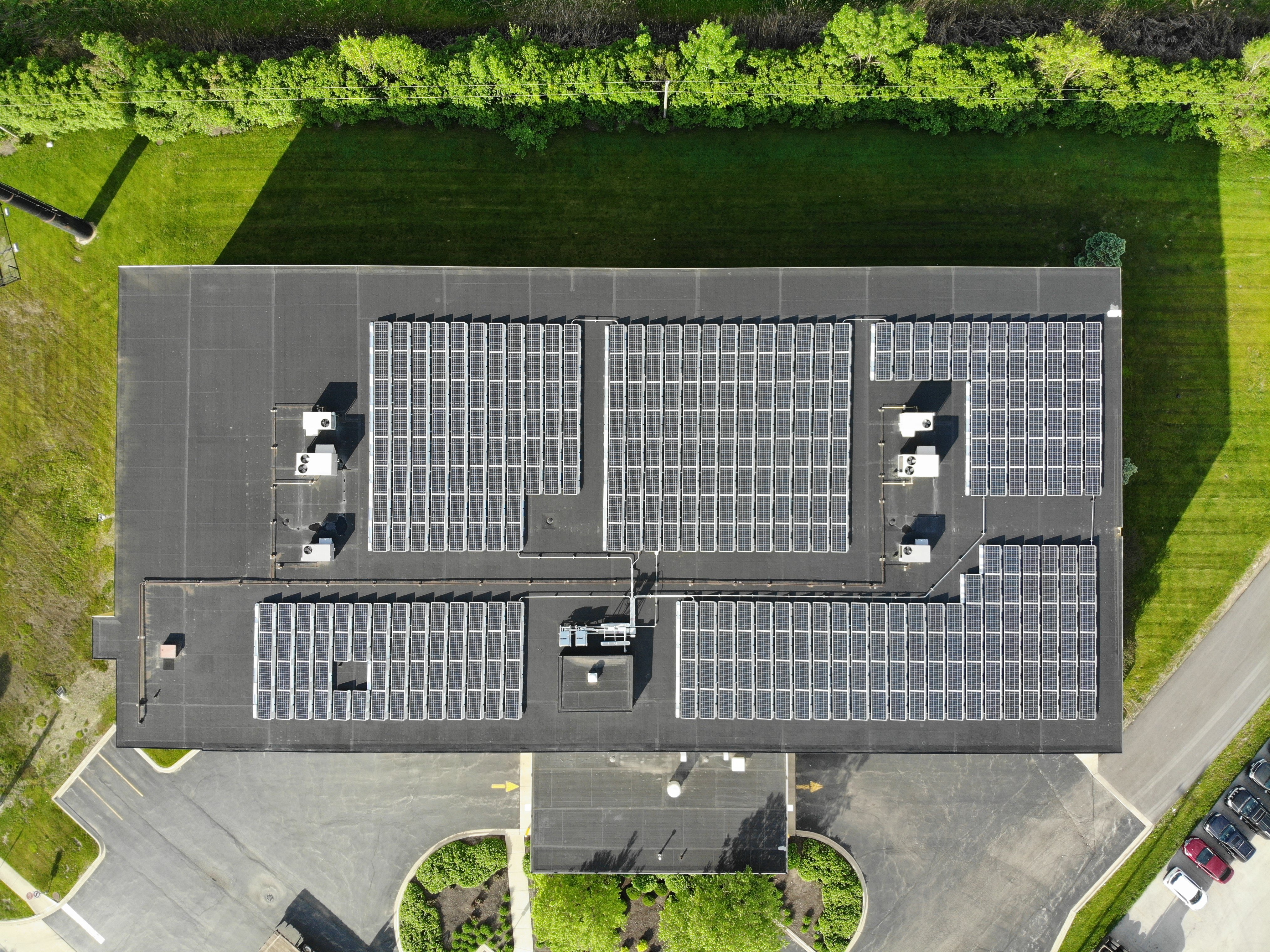LEED Certification and Solar: How Renewables Can Help
July 22, 2021

Companies are investing in green building and green business more than ever before. LEED certification is a popular way for companies to differentiate themselves from their competition by demonstrating their commitment to the health of people and the planet. Onsite solar can play a key role in a facility attaining LEED certification. In this article, we will break down what LEED certification is and how solar can help achieve or boost a building’s LEED rating.
About LEED Certifications
LEED is a certification system designed by the U.S. Green Building Council with the goal of preserving natural resources and improving quality of life through green building construction. ‘LEED’ stands for ‘Leadership in Energy and Environmental Design’ and the LEED system is comprised of a combination of well-disciplined practices from architecture and interior design to engineering and construction.
LEED is flexible in that it can apply to all building types–commercial and residential– in any building phase. Additionally, a building can pass LEED requirements in a variety of ways as long as it meets the point requirements for each rating level.
There are four different LEED ratings based on points:
- LEED Certified: 40-49 points
- LEED Silver: 50-59 points
- LEED Gold: 60-79 points
- LEED Platinum: 80+ points
Points are earned by meeting certain criteria, and that criteria varies based on the structure in question. All points fall into the following predefined categories:
- Location and Transportation
- Sustainable Sites
- Water Usage Efficiency
- Energy and Atmosphere
- Materials and Resources
- Indoor Environmental Quality
- Innovation
- Regional Priority
Because every building is different, the path to LEED certification will vary. Some buildings may excel in Innovation while others may perform better under the Energy and Atmosphere category.
How Solar Can Help With LEED Certification
The primary LEED certification category pertaining to solar is the Energy and Atmosphere (EA) category, which looks at factors such as energy performance optimization, the sustainability of energy sources, and if there is an on-site source of energy.
Solar is especially relevant to the EA credit for renewable energy. The renewable energy credit requires that buildings use on-site renewable energy systems or produce renewable energy from off-site sources for all or a portion of the building’s annual energy use. There are 5 possible points in this category and the amount of points awarded is a function of the renewable energy produced compared to the building’s total energy use. Therefore, the more solar energy a building produces, the more energy use it offsets and the more points toward LEED certification it can receive (up to 5 points).
Below is the current LEED point breakdown for on-site renewable energy procurement:
Benefits of LEED Certification for Businesses
The benefits of implementing solar, especially on a large scale such as commercial solar, are closely aligned with the foundational goals of LEED certification: decreased carbon emissions, reduced reliance on traditional energy sources, cleaner air, and better building decisions.
There are also a number of direct benefits to LEED certification and solar energy for commercial buildings and businesses in general. Here are just a few of the ways your business can benefit from achieving LEED certification:
- Boost Your Public Image. Communities typically view LEED-certified buildings in a favorable light because LEED certification demonstrates a business’s commitment to environmentally friendly behavior. In a time of heightened awareness about the impacts of climate change due to greenhouse gas emissions, this is especially relevant. Furthermore, sustainability in business is particularly important to millennials (the largest portion of the world’s population) who are notoriously climate-conscious.
- Lower Utility Costs. Commercial solar alone can significantly reduce your business’s utility costs. But when you pair your commercial solar with the additional energy and water-saving technologies required for LEED certification, you can really maximize your savings and have a positive impact on your bottom line.
- Positive Eco Impact. In addition to the benefits of improved public opinion and lower utility costs, LEED certification is simply good for the planet. Traditional electric power production accounts for 28% of greenhouse gas emissions in the United States. By implementing sustainable technologies such as onsite solar for business you will drastically reduce your business’s carbon footprint and make a real impact to counter climate change.
Learn More About LEED Certification and Commercial Solar
If you are a business owner or a facility manager considering LEED certification for your building, solar can be a huge step toward achieving that goal. If you decide to make solar a key player in your LEED certification strategy, it is important that you work with a trusted commercial solar developer who is familiar with LEED certification requirements and the role that solar plays in attaining certification.
The Pivot Energy team has extensive experience developing commercial solar projects that help buildings achieve LEED certification. We are ready to help you maximize your commercial solar potential and support you on your journey toward LEED certification.
Contact us today to speak with our commercial solar specialists or to set up a free consultation.

.jpg?width=123&name=Angie%20Agrivoltaics%20Award%20(HQ).jpg)


.jpg?width=400&name=Angie%20Agrivoltaics%20Award%20(HQ).jpg)

